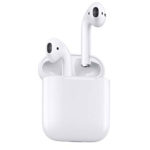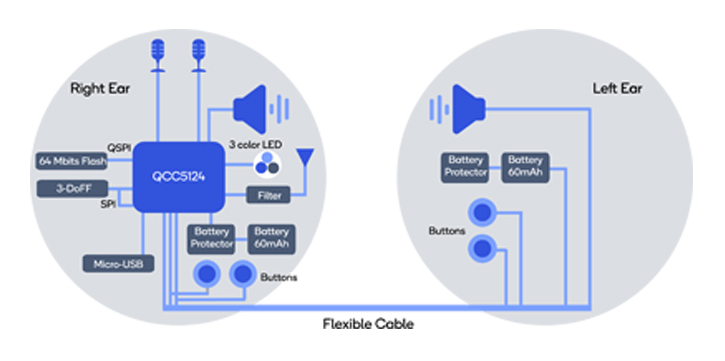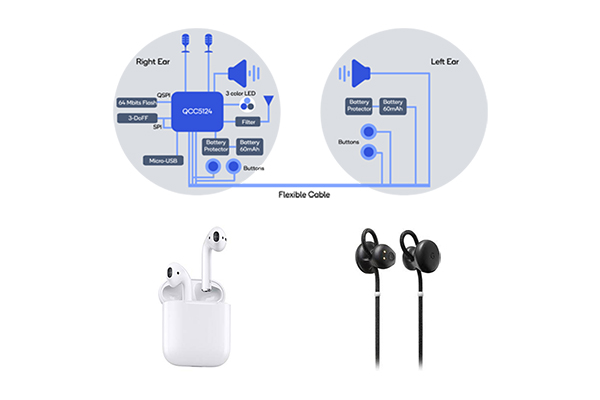Competing For Ear Share – Apple AirPods, Google Pixel Buds, and Amazon Alexa

David Kemp
Hello, Voicebot readers. Welcome to the first issue of the hearables-themed column I’ll be writing for Voicebot.ai this year. As we enter into 2019, and the flurry of news that will surely come out of next week’s CES, I thought it might be worth looking at where the major US smart assistant providers stand with regard to their current in-the-ear device strategies.
Over the past few years, we’ve seen a lot of focus in the Voice industry around devices using far-field microphones with new smart speakers and smart displays. This year, it will be interesting to see how all the smart assistant providers approach their near-field strategies with ear-worn devices in an effort to gain smart assistant “ear-share.”
AirPods’ Early Lead
One of the most pressing questions I have entering into 2019 is, “How will Google, Amazon, and the other smart assistant providers look to compete with Apple’s AirPods?” Apple doesn’t disclose the unit sales of AirPods, but NPD reported in August of 2017 that Apple’s AirPods accounted for 85% of the “totally wireless earbuds sales” which is estimated to be 900,000 units at the time. This would mean Apple had sold roughly 765,000 AirPods through the first eight months since AirPods debuted in December 2016.

Apple AirPods; Photo Credit: Apple
When Apple reports earnings, it lumps AirPods into “Other Products” along with Apple TV, HomePod, Beats headphones and Apple Watch. In its Q4 earnings report, Apple reported that “Other Products” brought in $4.23 billion in revenue, which was a 31% increase year-over-year. Furthermore, during the Q4 earnings call, Tim Cook stated, “Apple’s wearable business, which includes AirPods, Beats and Apple Watch, was up 50% year-over-year.” Cook makes it clear that AirPods are a key component to one of the revenue growth centers within the company. So, it should come to no surprise that Apple will continue to double-down and invest in its wearable offerings, especially considering that no other smart assistant provider has a significant wearables presence.
Amazon’s Rebuttal
Amazon’s initial rebuttal to AirPods seems to be through third-party integrations of Alexa. In January 2018, Amazon announced a software development kit named the Amazon Mobile Accessory Kit (AMAK). According to Gagan Luthra, AMAK product manager, the purpose of this kit is to enable mobile device OEMs to easily add Alexa to their devices with minimal cost and integration efforts. Initially, AMAK was limited to a select number OEMs, such as Bose and Jabra. The Jabra Elite 65t wireless earbuds and the Bose QC 35 wireless headphones both feature Alexa integration, representing third-party offerings that have taken advantage of AMAK. In November, Amazon announced that it had opened up AMAK to all mobile device OEMs.
In addition to AMAK, there’s another reason we might see more of an Alexa third-party push with the incoming wave of hearables, and that’s thanks to Qualcomm. It’s important to point out that Apple’s Watch and AirPods are both powered by Apple’s proprietary W-series chip. That means chip manufacturers such as Qualcomm are effectively shut out from Apple’s wearable offerings, which is why at CES 2018 Qualcomm introduced its new hearable-centric system-on-a-chip (SoC), the QCC5100, designed to power AirPods’ competitors. Qualcomm took it one step further in October, by introducing the, “Qualcomm Smart Headset Reference Design for Amazon Alexa Voice Service.” This reference design is intended to serve as a guide for OEMs to use when developing hearables that are built for Alexa, powered by Qualcomm.

Qualcomm Smart Headset Block Diagram; Photo Credit: Qualcomm
Google’s Mixed Strategy
Google ventured into the hearables space with the introduction of Pixel Buds in October of 2017. Unfortunately for Google, Pixel Buds were not met with much enthusiasm, as critics cited a poor UX, an odd carrying case, and a bizarre earbud form-factor (they’re not actually wireless between the earbuds). Pixel Buds also have a number of frustrating flaws that are littered throughout the product, such as the touch controls that are very sensitive and prone to inadvertently skipping ahead when listening to music or a podcast. As Sean O’Kane puts it, “The touch controls are an exercise in frustration.”
Google Pixel Buds; Photo Credit: Google
Google does not report unit sales of its Pixel Buds, so it’s hard to know how disappointing the first version was from a financial standpoint for parent company Alphabet. Over the past few years, Google has gotten a lot better at producing hardware, with successes such as Google Home, Home Mini, and Pixel handsets. That recent history made Pixel Buds a bit of an anomaly.
Google is in a much different position than Amazon when it comes to offering on-the-go access to its smart assistant, due to its Android ecosystem. Whereas Amazon has been forced to build its smart speaker and third-party Alexa-enabled ecosystem from scratch, Google, like Apple, was able to quickly provide access to Google Assistant through its mobile operating system, Android.
According to Voicebot’s 2018 Voice Assistant Consumer Report, there are twice as many voice assistant users on smartphones compared to smart speakers in the US. Therefore, Google might currently be more focused on growing its Google Assistant footprint in other areas, as it knows that it has a captive base of mobile users which can access its assistant by default through third-party Bluetooth headphones; a luxury that Amazon does not have.
Beyond the Big Three
While it’s tempting to focus on the key actions of the big three tech companies in voice, independents will also play an important role. Hearables hardware manufacturers such as NuHeara, Bose, Bragi, and Jabra will continue to will drive the market forward with innovative packaging, feature-sets, and branding. While some of the independent, third-party OEMs integrate the voice assistants of the big three into their offerings, others, may try to implement their own voice assistant technology or use existing products such as Sensory for on-device processing. When it comes to hearables, there will be a lot of players bringing AI to the earbud experience and that will soon transform not just the consumer market but also the medical market inside the hearing aid segment.
Qualcomm Announces Smart Headset Development Kit to Promote Alexa Use in Hearables









